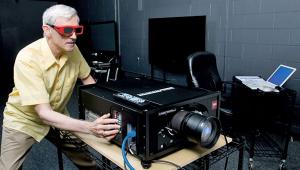A Closer Look at Active vs Passive 3D Flat Panels
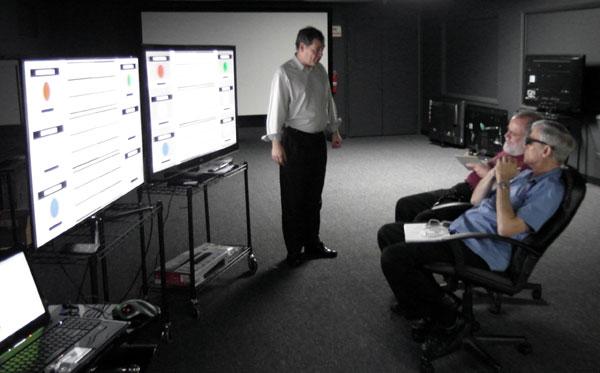
Most of Kane's 3D patterns are what he calls "3D flat," which means the left and right images coincide exactlyin other words, the 3D images have no depth, and everything appears to be in the plane of the screen. Why make 3D test patterns like this? Because, Kane says, such images will look the best that a 3D display can manage, and you don't need to wear glasses to use them. A few of the patterns do have some elements behind and in front of the screen plane, and all have "L" and "R" indicators that are isolated for the left and right eyes, respectively, so you can make sure the display and glasses are oriented properly.
Kane also emphasized that a good 3D display must first be a good 2D displayafter all, a 3D image is nothing more than two 2D images, so the display must exhibit good 2D performance if it has any hope of doing 3D well. This is another reason to use 3D-flat test patterns to evaluate a 3D display's performance.
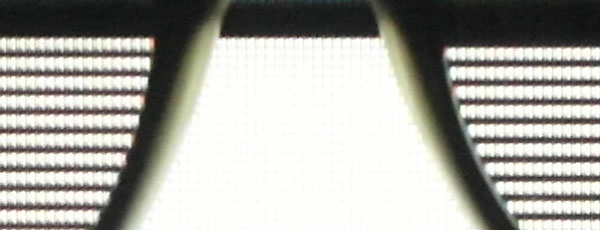
As you might know already, passive 3D flat panels use what's called a film pattern retarder (FPR) filter on the screen to oppositely polarize alternating lines in the imagethe left eye sees the odd-numbered lines, while the right eye sees the even-numbered lines. In the photo above, we held polarized glasses against the top of the LG's screen. You can clearly see that the first row of pixels are visible through the left lens and not visible through the right lens, and that alternating rows are visible to each eye with a black line between them. This demonstrates that each eye sees only 540 lines of vertical resolution on an FPR-based 3D flat panel.
Makers of such sets claim that, while each eye sees only 540 lines, the brain combines the two images into one, resulting in a total of 1080 lines. However, Kane disputes this, saying that the two images must be kept completely isolated from each other or we would see no 3D effect at all, and if each eye sees 540 lines, that's the total effective resolution.
In addition, this is why thin, black horizontal lines are visible when viewing an FPR-based 3D flat panel within a certain distance from the screen. And this proves that the brain does not completely combine the two images into oneif it did, the black lines wouldn't be visible at any distance. Of course, you can sit far enough away to render those lines invisible, but that would also reduce the amount of detail you see and cause the 3D effect to be less immersive.
LG claims that its FPR panels are actually displaying all 1080 lines of information for each eye, but not at the same time. In the first 120th of a second, the odd lines of the left image are displayed in the odd lines on the screen and the odd lines of the right image are displayed in the even lines on the screen. Then, in the next 120th of a second, the even lines of the left image are displayed in the odd lines on the screen and the even lines of the right image are displayed in the even lines on the screen. (For more on this, see my discussion here.) This is very similar to interlacing, which has its own problems.
However, this puts some lines in the wrong placeeven lines from the image in odd lines on the screen and vice versawhich would cause a slight but noticeable vertical judder. And even though all 1080 lines of information for each eye are being displayed, each eye sees only 540 lines of resolution at any given instant. Not only that, objects behind or in front of the screen plane will exhibit interlace artifacts.
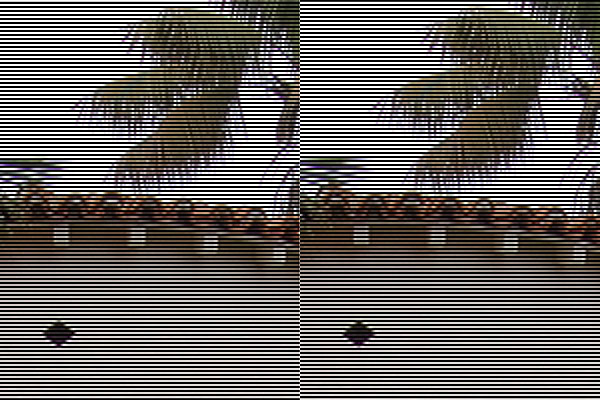
To clearly reveal the judder effect, Kane made two copies of a high-res still photo, deleted the odd lines from one and the even lines from the other as seen in the close-up above, and precisely overlapped them, making a 3D flat image. Before visiting the studio, Kane had displayed this photo on other LG FPR sets and didn't see any vertical judder, but we did see a bit of judder on our set. The other sets had the latest firmware available to consumers, but our set has even more recent firmware that is not yet generally available. Kane concluded that previous versions aren't trying to do the interlacing trick, but our version is.
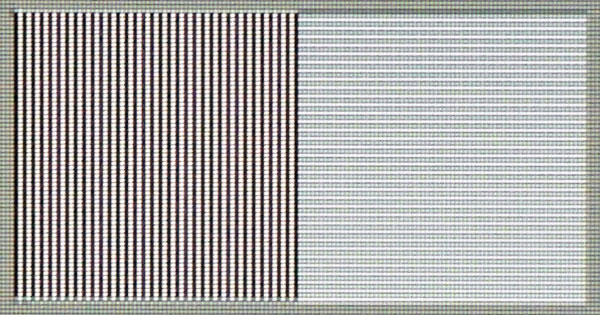
To reduce the appearance of vertical judder, Kane says the TV filters the incoming video signal to remove the highest frequencies in the vertical direction, thus reducing vertical resolution. This is clearly evident in the high-frequency horizontal and vertical bursts in Kane's 3D flat patterns, in which vertical and horizontal lines of single pixels alternate between white and black. As you can see in the photo above, the horizontal burst is fully resolved on the LG, but the vertical burst is nearly invisible.
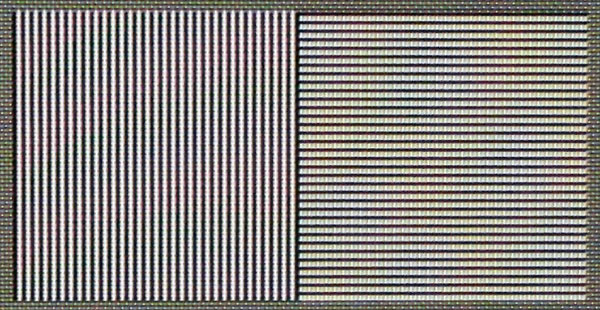
By contrast, as seen in the photo above, the vertical burst is fully resolved on the Samsung set, which uses active glasses and therefore presents full resolution to each eye.
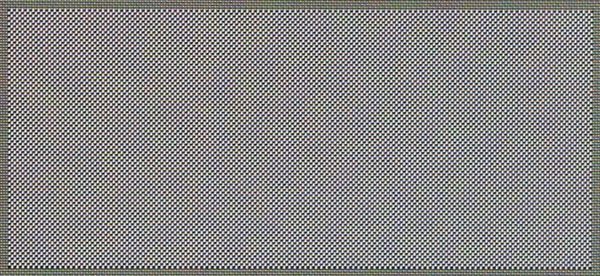
Another revealing pattern called "pixel phase" combines the horizontal and vertical bursts into a checkerboard of white and black pixels. On the Samsung, this checkerboard is clearly visible.
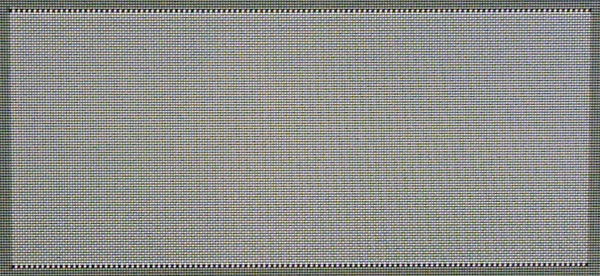
On the LG, high-frequency filtering renders the pixel-phase pattern almost solid gray.
Kane's 3D test patterns will be available first for the VideoForge, but he also intends to put them on a Blu-ray disc at some point. When? He doesn't know, but I'll be sure to let you know as soon as he tells me.
Of course, consumers don't watch test patternsthey watch real content, which often obscures some of the problems I've been talking about. And I must say that lots of 3D content I've seen on passive panels looks sharper than I would expect with the vertical resolution of only 540 lines. On the other hand, the 3D effect doesn't quite "jell" as completely as it does on active displaysit feels a bit discombobulated. Also, I still see thin, black horizontal lines on FPR flat panels, especially in large single-color areas and text, that are not visible on active sets. And FPR sets exhibit lots of crosstalk when viewed from much above or below the central axis, so anyone watching from the floor won't have a satisfying experience.
All in all, it was a very illuminating afternoon at Grayscale Studio, strengthening my conviction that active 3D flat panels produce a better 3D image than passive FPR sets. Yes, active glasses are more expensive (though they have dramatically dropped in price with Samsung's announcement of $50 models), they are heavier and clunkier than passive glasses, and they require periodic battery replacement or recharging. But if you're like me, you want the best possible image quality, and with 3D flat panels, that means active-shutter glasses.
